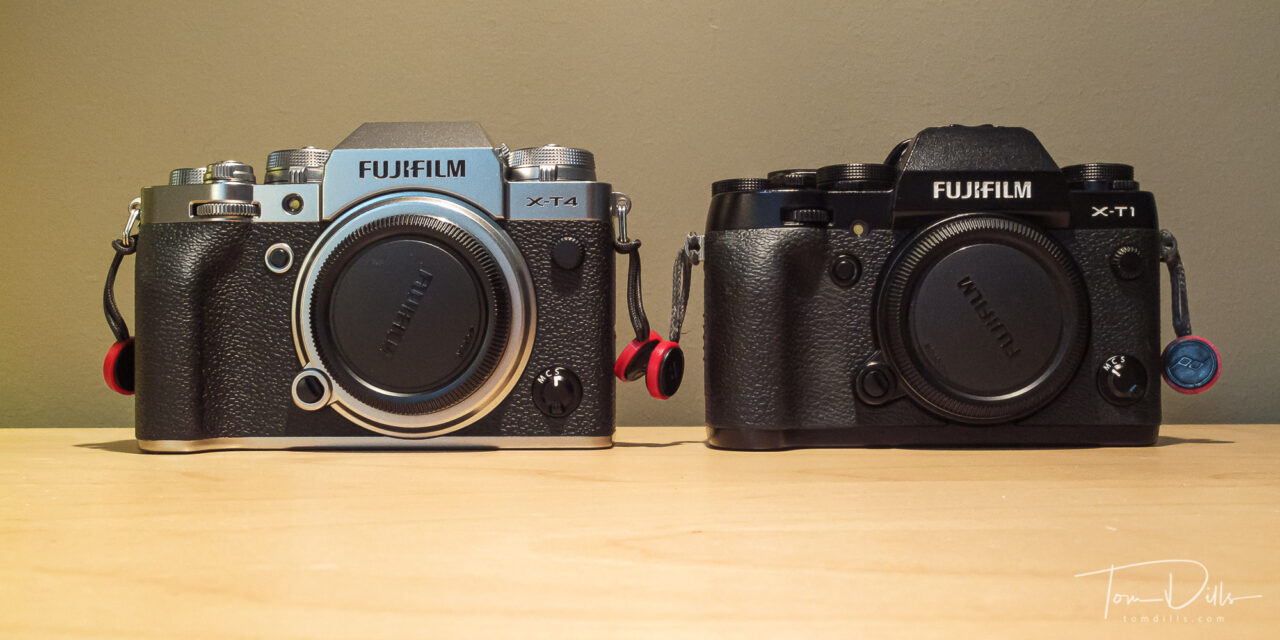
There are numerous reviews already on the interwebs about the recently-introduced X-T4, but I thought it might be beneficial to at least one person (probably only me) to summarize my first impressions based on my own user experience and my own preferences in a somewhat (hopefully) cogent blog post.
My very first impression when I pulled the camera out of the box was “wow, this thing is a brick!” While small in comparison to full-sized SLRs, the X-T4 on my scale weighs in at 21.8oz/618g vs. 16oz/455g for the X-T1. Both cameras with battery and card but no lens. That’s no small difference – about 36% by my calculation. But it’s not really heavy, as cameras go. The word I use to describe the X-T4 is that it feels “solid.”
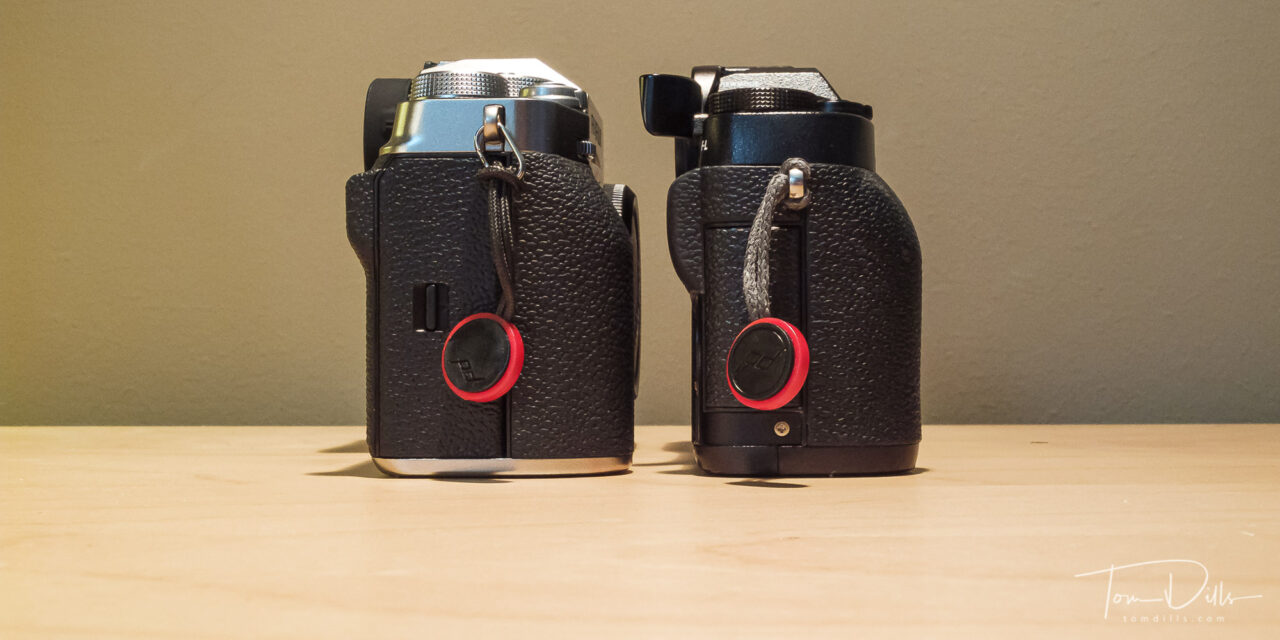
When I downsized from the full-size Canon 5D Mark III to the X-T1 and the X-E2, I initially had a hard time adjusting to the smaller bodies, to the point where I purchased the accessory grips for both of them, and I would occasionally keep the L-brackets on them when walking around. I gradually got to the point where I was comfortable with the bodies without the grips, although it took me a while before I started leaving the grips at home. The X-T4 recaptures a bit of that “mass” with nicely designed grips on the right side, front and back. I’ll probably still add a Lensmate thumb rest, as that has sort of become “standard equipment” for me. I like the extra stability that the thumb rest provides.
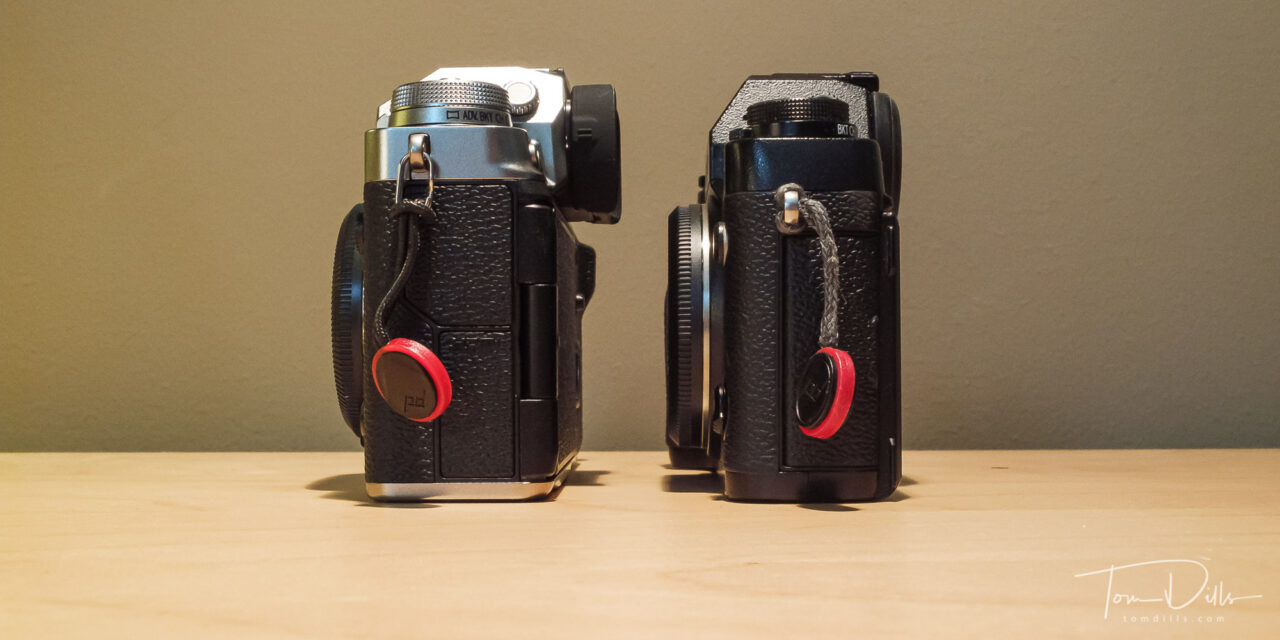
I was initially excited about what I thought would be the ability to save multiple custom settings. But unless I’m missing something – which is certainly possible – it doesn’t save everything for a particular situation. As an example, I would like to set up a “Tripod” setting that locks in a low ISO, sets a 2-second delay and turns off image stabilization, among other things. I would also like to set an “outdoor” setting with a lower Auto ISO range, and an “indoor” setting with a higher Auto ISO range. But I can’t seem to get everything in each setting to “stick.” I need to mess with it some more but it just may not be possible. Not a big deal, but a small disappointment after I initially thought I could do that. Although I didn’t buy the camera for that function, it would be nice to have.
Physically, the X-T4 has some very small but very important improvements. Locks on the diopter knob, as well as the shutter speed and ISO dials. Almost all of the buttons are customizable, with almost all functions able to be assigned to a button. I have assigned a button to control image stabilization, one to turn the 2-second self-timer on and one as a depth of preview button. In addition to manual controls and the ‘A’ setting for aperture, shutter speed and exposure compensation, there is a ‘C’ setting that allows you to control those same functions with one of the control wheels, so I can adjust (for example) aperture and exposure compensation using the wheels, keeping my eye on the viewfinder. That’s a new-for-me feature and one I think I will find useful. Dual card slots are not a big deal for me, but it will be nice to start out with two cards in the camera instead of just one. This camera takes big files – in excess of 50MB each – so cards will fill a lot faster! I’ll need to keep using the camera in specific situations to figure out things like the HDR burst mode, nuances in the metering & focusing options and other things. All in good time!
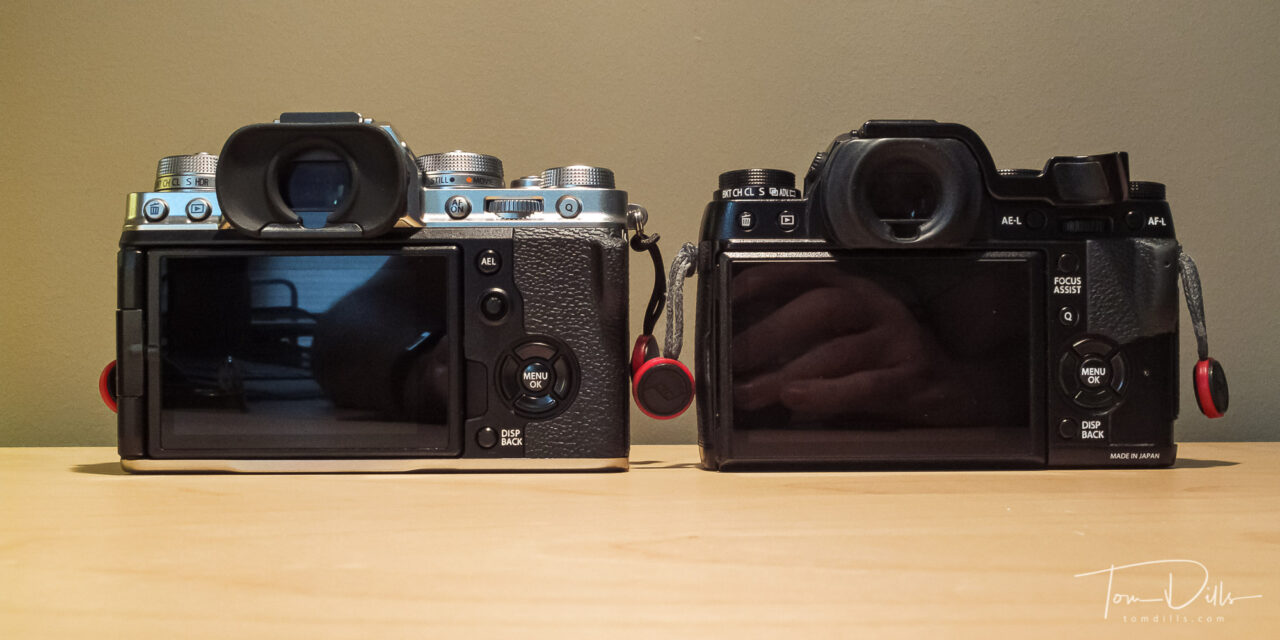
One of the downsides I have heard others mention is the new, fully articulating screen. I know there will be situations where I’ll miss the tilting screen on the X-T1, but I think there will a lot more times when I’ll appreciate the flexibility of the articulating screen. Also, I generally use only the viewfinder for shooting, so having the ability to turn the screen around completely will be nice.
I haven’t spent a lot of time pixel-peeping, but initially I have to say that image quality appears to be very good. I haven’t had any extreme exposure situations and I’m still messing with Lightroom settings, but except for the addition of a bunch of new film simulations (which I love), it seems like most of my other workflow remains intact. So far I have mostly been shooting with the also-new 16-80 f4 lens, although for last evening’s sunset photos I used the 55-200, also with good results. I’m going to love shooting with my non-stabilized prime lenses using the new IBIS.
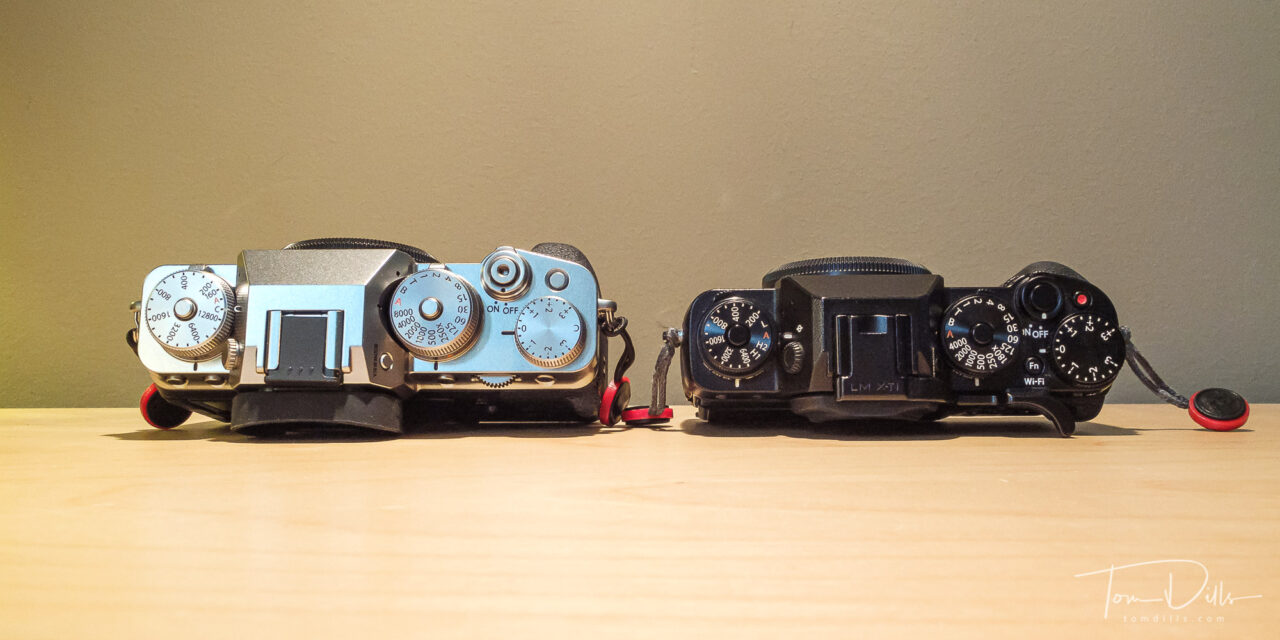
I think that’s it for now. Once I have a few thousand photos under my belt I may have some more useful thoughts, but for now I just need to keep using the camera and solve any problems or challenges that come along. If anyone has any questions I’d be happy to answer them to the extent I am able.
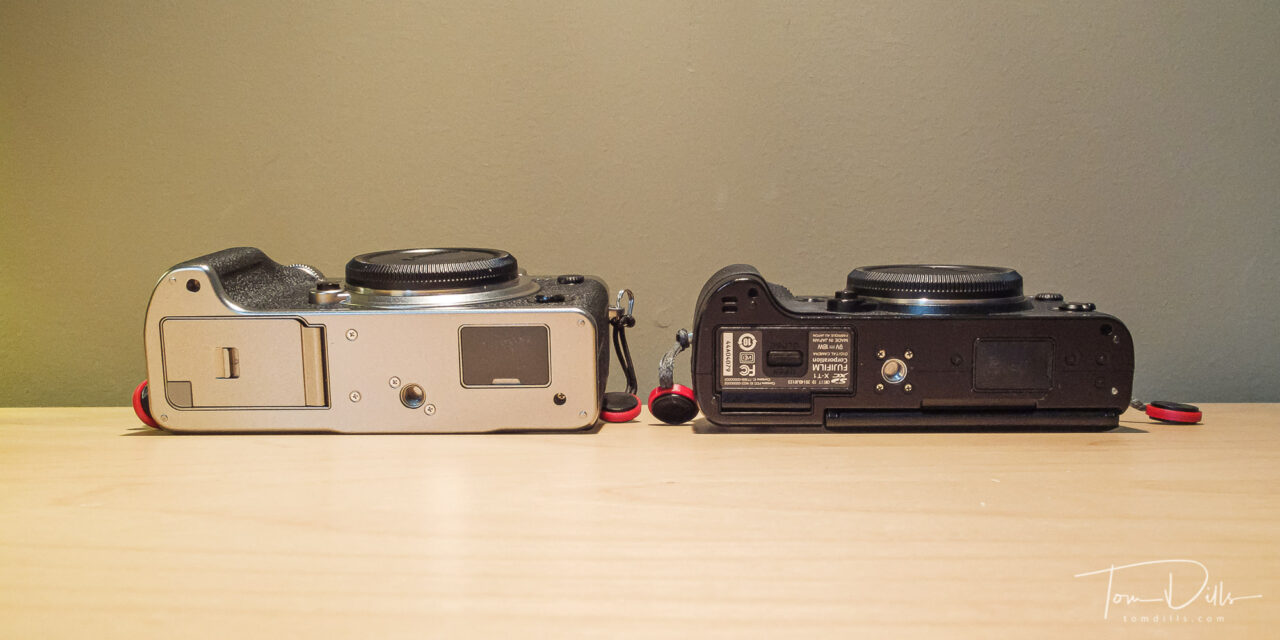

I had the same experience when I started using the Olympus as opposed to the Nikon D610. The Oly was tiny by comparison but I have learned to embrace the size and controls. I still use the D610 for much of the Museum work (mostly because I have the macro lens) and it’s a solid performer. Sad to say neither camera is as tank-like as my old Nikon FM2 film camera. You could hammer roofing nails all day with it and it would still shoot great all night.
I got a late start in my photography and missed the era of the “bulletproof” cameras like the old film Nikons. And while the original “pro” digital cameras were big and bulky (many still are) I never got the impression that they had the same overall build quality of the tough-as-nails film cameras. And there is always something to be said for a camera that will still work without batteries! 😉
LOL
Great little review and informative. I’m not sure why this camera does not interest me. I’m more interested in the X-T3, maybe because of the cost and it fits my photography needs.
I find it interesting with the custom settings as I have set them up for my different shooting situations on my X-T10 and X-E1: landscapes, portraits, street.
The larger body will be a major jump for me from my X-T10. Good grief on the file size. I would need to get bigger memory cards for sure.
One aspect of my X-T10 over my Nikon D300 was the cheaper feel which may be more about the size than the quality of the body. I’ve had the camera for over five years and it’s been banged around quite a bit, even dropped from a nightstand. It’s positively far more consistent in taking images than the photographer. 🙂
I use the tilting screen more than I expected and not sure how I would feel with the articulating screen. So often I’m unable to see the screen when outdoors unless I use a cloth over my head.
I believe you are a photographer who will in a short period of time come to know this camera and lens well enough to use it as the tool it is designed for. Therefore we will see some awesome images on this webiste.
Thanks for the review!!
Thanks, Monte. If I had the X-T3 I would not bother with the upgrade. In fact I might not bother if I had the X-T2, but the three category jump is a good one. The IBIS overrules any concerns I have about the screen. And truthfully, when walking around I would usually turn the rear screen off entirely, using the Eye Sensor for just the EVF. I can see me doing the same with this camera – turning the screen around unless it is on a tripod or I am doing something with the menus.
We’re cooking up plans for a road trip to the northwest that may have us come through your way in July or August. So you might be able to see this thing in person. Is the trip you previously mentioned still a go?
At the present time we’ll be in Seattle from July 2nd to July 7th.
We would be there after that and will be in touch. That’s a long way off using current timekeeping.